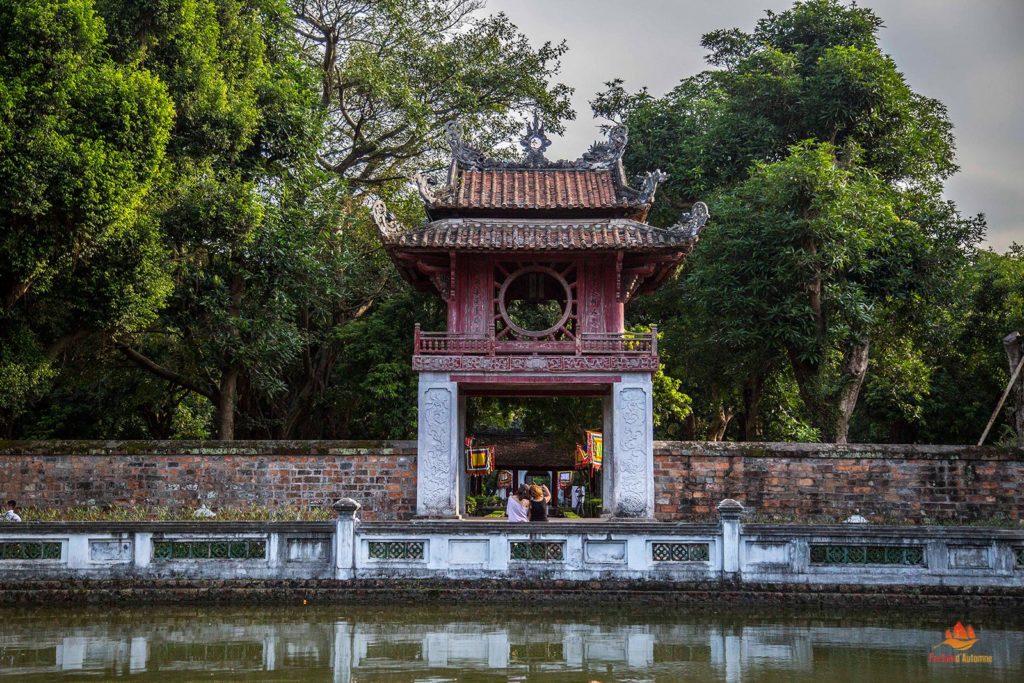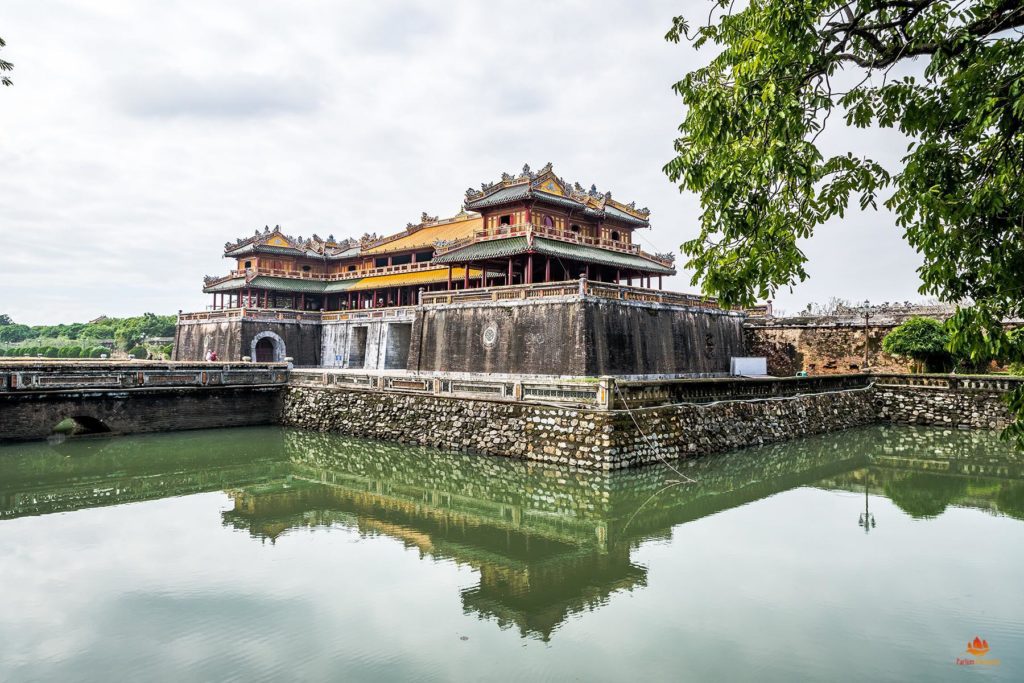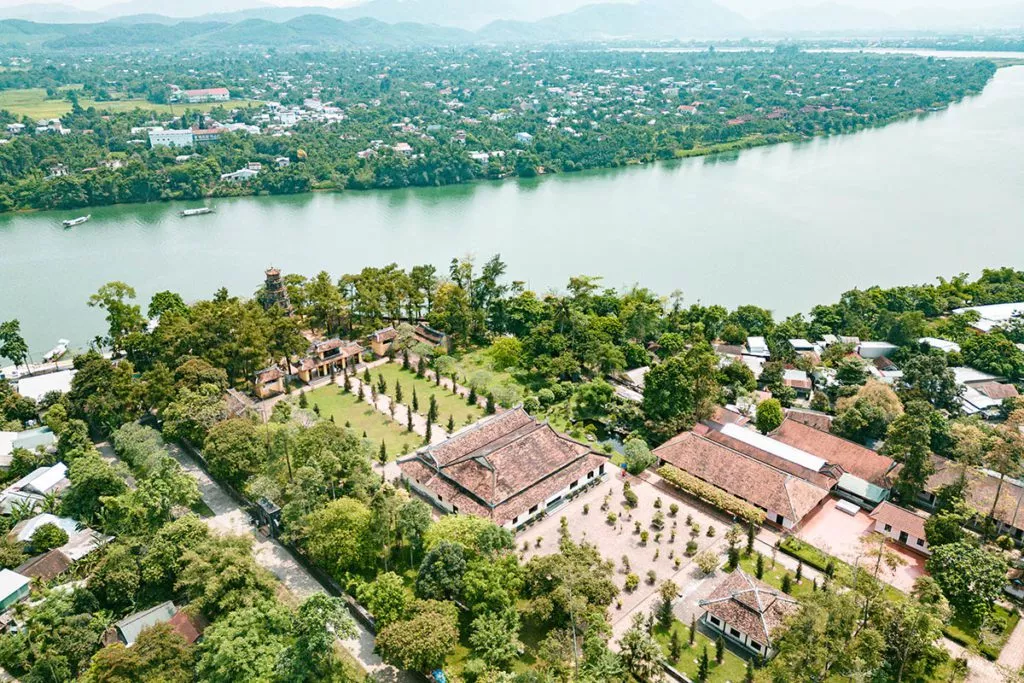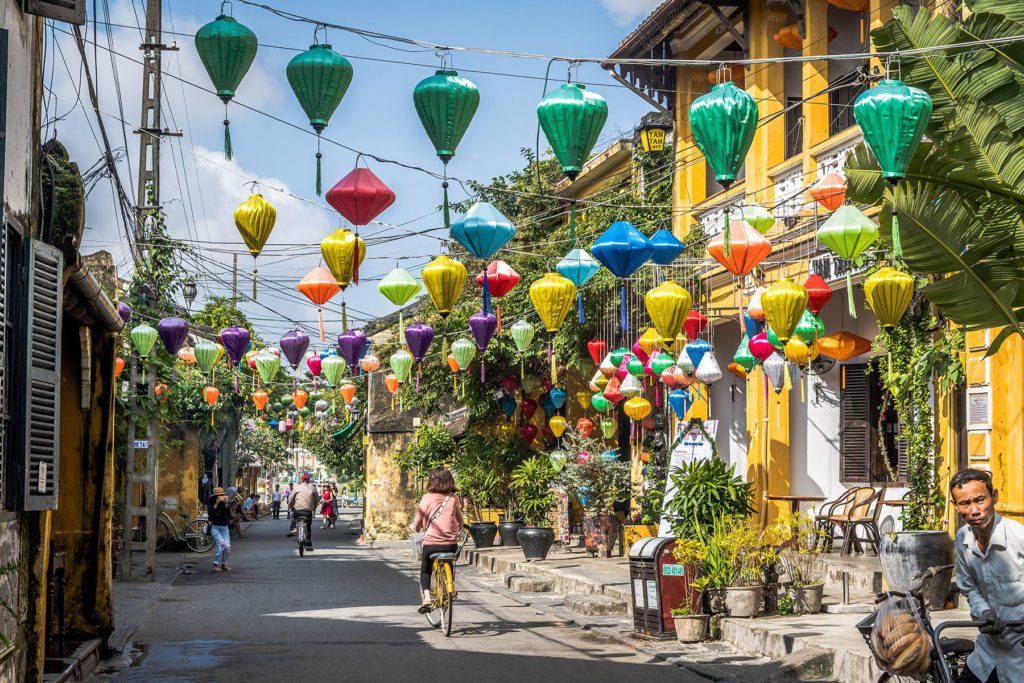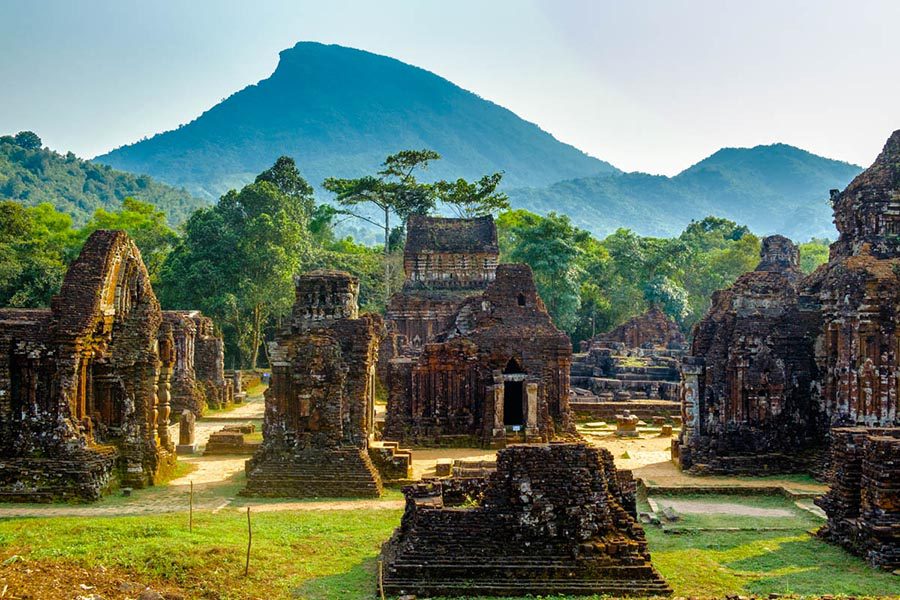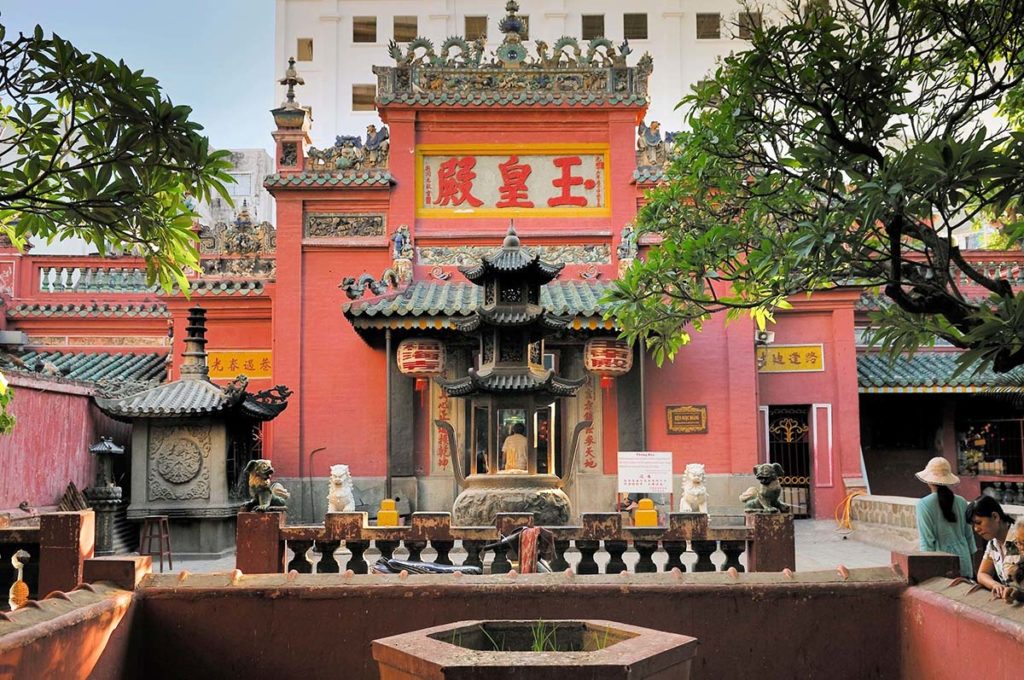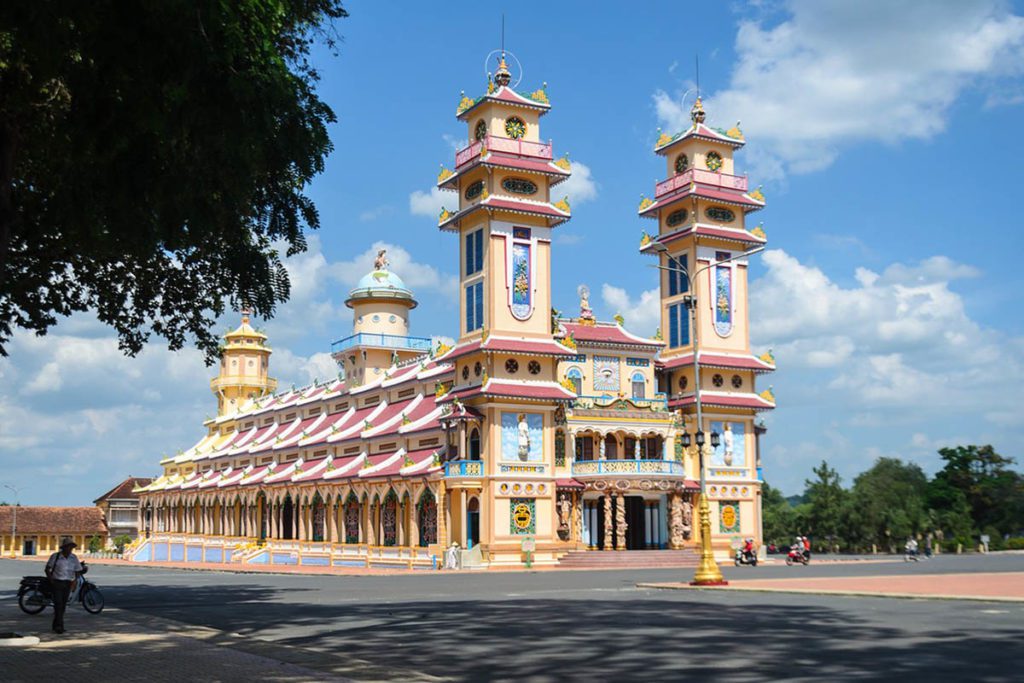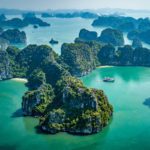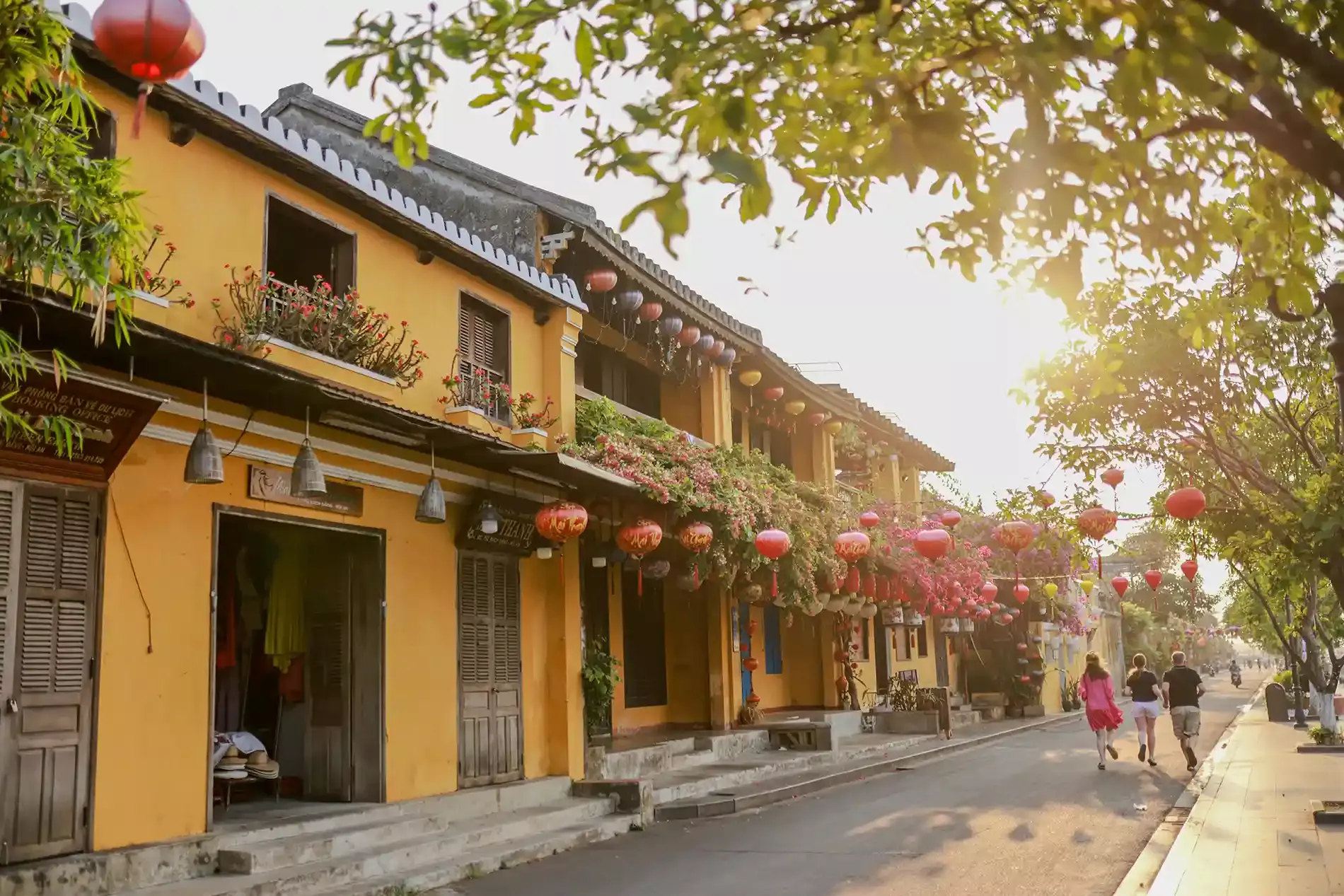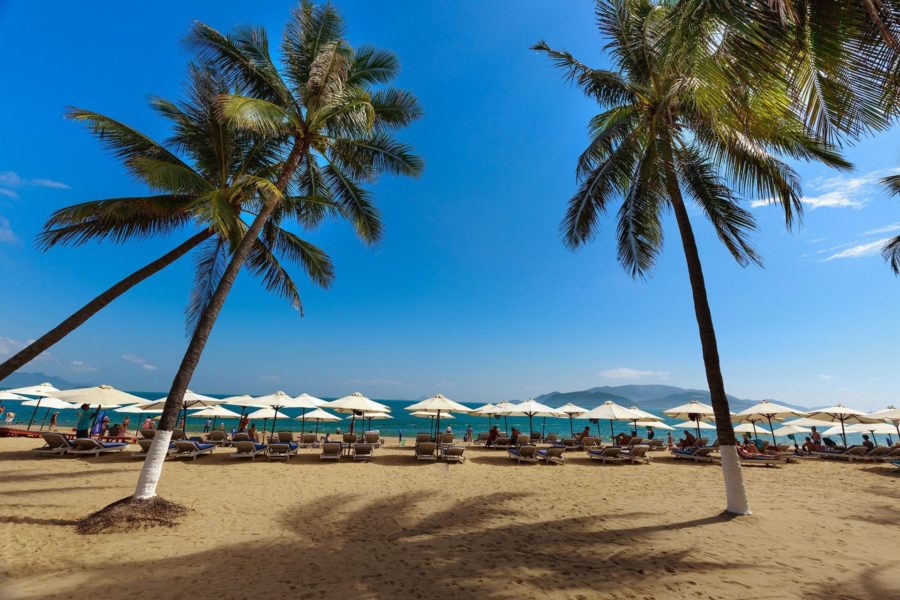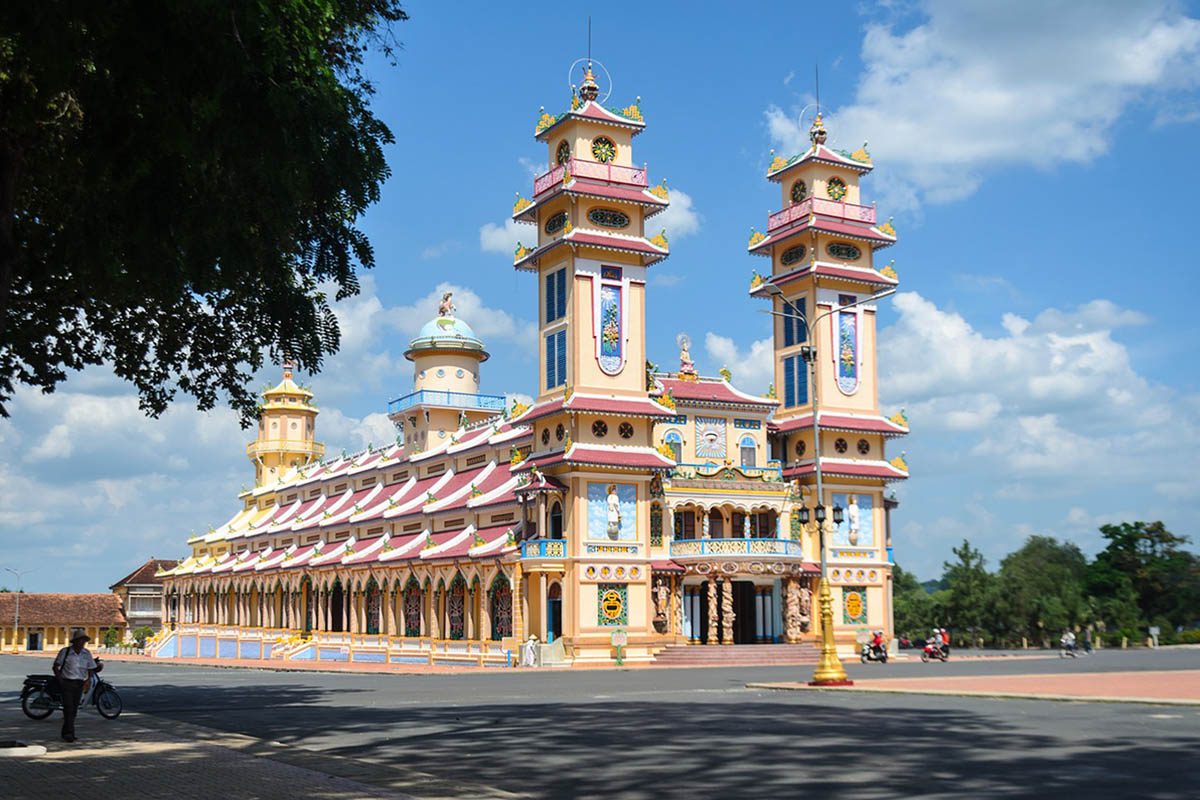
Top 10 must-visit monuments in Vietnam
As a country with a rich and complex history, Vietnam is home to historical and cultural monuments that serve as silent witnesses to its tumultuous past and resilience in the face of challenges.
Monuments, more than simple stone structures, play a crucial role in preserving a country’s history and culture. They embody the stories, legends, and events that have shaped the Vietnamese nation over the centuries. These monuments are guardians of collective memory, reminding current and future generations of the precious heritage of their ancestors.
In this article, we invite you on a journey through Vietnam to discover the 10 most exceptional monuments in the country. Each of these monuments is a masterpiece of Vietnamese history and culture, offering a unique insight into the soul of this dynamic nation. From the Temple of Literature in Hanoi to the Cao Dai Temple in Tay Ninh and the Imperial City of Hue, these monuments will transport you to a world where the past and present harmoniously converge.
Feel free to contact us to plan your trip.
Table des matières de l'article
Temple of Literature (Hanoï)
The “Temple of Literature” was originally a university intended to teach arts and morality to the children of the kings of the first Ly dynasty. The establishment of this university marked the entry of the mandarinate into Vietnamese elitist culture. Young men selected to enter became high officials serving the Nation and the State. Upon graduation, these young men became the “Sons of the Nation” (Quoc Tu Giam).
The adoption by the elite of Confucian morality helped legitimize a power that, at the time, remained fragile. The university gradually expanded to include affluent families and scholars, regardless of their social origin.
This sacred place reveals the profound respect of the Vietnamese for knowledge. Stone steles honoring winners of imperial exams inscribe in stone the tribute paid to those who contributed to the government and culture of the country.
The traditional Vietnamese architecture of the temple is a spectacular demonstration of steep roofs, carved columns, and delicate details. The wooden buildings, adorned with lacquer and gilding, testify to the craftsmanship and sophistication of ancient Vietnamese architecture.
The peaceful gardens surrounding the temple offer a welcome break from the hustle and bustle of the city. Visitors can stroll among the trees, lotus ponds, and turtle statues, creating an atmosphere of serenity and contemplation.
Even today, the Temple of Literature is where graduation ceremonies take place, where graduates dressed in traditional robes are honored for their academic excellence.
The Temple of Literature transcends its status as a historical site to embody the intellectual soul of Vietnam. Exploring this monument, visitors are invited to delve into the captivating past of the country while reflecting on the fundamental values that have shaped modern Vietnamese nation.
Temple of Literature, Hanoi, Vietnam
Ho Chi Minh mausoleum (Hanoi)
The Ho Chi Minh Mausoleum, an iconic symbol of Vietnam, pays tribute to Ho Chi Minh, a key figure in the establishment of modern Vietnam.
Ho Chi Minh, born Nguyen Sinh Cung, is revered in Vietnam for his pivotal role in the struggle for independence against colonial forces. He founded the Vietnamese Communist Party and presided over the Democratic Republic of Vietnam, later becoming the Socialist Republic of Vietnam.
Located on Ba Dinh Square in Hanoi, the mausoleum features a simple and solemn architecture, constructed from white marble in the traditional Vietnamese style. Surrounded by peaceful gardens, the mausoleum houses the embalmed body of Ho Chi Minh in a glass sarcophagus, despite his preference for cremation.
Visiting the mausoleum is a solemn act, subject to a strict dress code and involving silent walking, contemplation in front of the sarcophagus, and respect for the deceased. While queues may be long, the experience is worthwhile for those wishing to honor the memory of this exceptional man.
The Ho Chi Minh Mausoleum allows visitors to delve into Vietnam’s recent history, understand Ho Chi Minh’s role in shaping the modern country, and appreciate the deep reverence of the Vietnamese people towards him. It is a must-visit monument for those exploring Vietnam’s history and culture.
Ba Dinh square and the Ho Chi Minh Mausoleum
Perfume Pagoda
The Perfume Pagoda, locally known as “Chùa Hương,” is a place imbued with spirituality, natural beauty, and deeply rooted religious traditions.
This major pilgrimage site is located in the limestone mountains of Huong Tich, near Hanoi, and attracts thousands of pilgrims and visitors each year, especially during Tet (Vietnamese New Year) and the Perfume Pagoda Festival.
To reach the pagoda, visitors typically board traditional Vietnamese boats along the Yen Vi River. After disembarking, a climb of several hundred steps carved into the limestone rock leads them to the pagoda, symbolizing the journey toward enlightenment and the purification of the soul.
The Perfume Pagoda is renowned for its annual festivals, particularly the Perfume Pagoda Festival, which takes place during the first three months of the Vietnamese lunar calendar. This festival is an opportunity to celebrate the new year and honor Buddhist deities, featuring processions, artistic performances, and collective prayers aimed at bringing blessings, luck, and peace. It is a place where spirituality, culture, and natural beauty come together to create an unforgettable experience.
Parfume Pagoda, in Northern Vietnam
Hue Imperial City
The Imperial City of Hue, a historical and cultural treasure, reflects the grandeur of Vietnam’s ancient imperial capital, embodying a rich imperial legacy.
Hué’s history dates back to the Nguyễn Dynasty, marking a century of prosperity as the political, cultural, and religious center of Vietnam. Witness to conflicts, intrigues, and major cultural developments, the citadel also suffered during the Vietnam War, notably with the Battle of Hué.
Surrounded by imposing walls, the Imperial City houses palaces, pavilions, temples, and gardens, all designed to seamlessly merge architecture and nature. Among its gems are the Palace of Supreme Harmony (Dai Noi), the emperor’s residence, the Pavilion of Reading, the Queen Mother’s Residence, and the Pavilion of the Ancestors, not to mention the imposing gates such as the Gate of Virtue (Ngo Mon) and the South Gate (Cua Ngoai).
Hué played a central role in shaping modern Vietnamese culture, marked by Confucian philosophy, art, traditional music, and literature. It is also where Vietnam underwent its transition from feudalism to modernity, symbolized by Emperor Bao Dai’s abdication in 1945.
Listed as a UNESCO World Heritage site, the Imperial City of Hué is a major attraction reminding of the significance of history and the grandeur of Vietnamese imperial culture. Exploring its majestic palaces and cobblestone streets, visitors delve into a bygone era still vibrant in the soul of Vietnam.
Entrance of the Hue Citadel
Thien Mu Pagoda (Hue)
The Pagoda of the Celestial Lady, known by its Vietnamese name Thien Mu, is an iconic monument in Vietnam, perched on the picturesque banks of the Perfume River in Hué. This pagoda embodies the history and spirituality of the country while offering spectacular architecture and rich cultural significance.
Founded in the 17th century by Lord Nguyễn Hòang, the pagoda has become a symbol of Vietnam’s religious and cultural history. It played a major role as a Buddhist center, promoting peace, serenity, and reflection, and was also the site of protests during the Vietnam War, notably with the heroic self-immolation of monk Thich Quang Duc.
The remarkable architecture of the pagoda, with its seven-story octagonal tower adorned with statues, bells, and courtyards, perfectly illustrates Vietnamese Buddhist style. The scenic location on the banks of the Perfume River offers visitors a magnificent panoramic view of the mountains and surrounding landscapes, promoting meditation and contemplation.
Surrounded by legends and captivating stories, the Pagoda of the Celestial Lady is steeped in the belief of the site’s divinity. This monument encapsulates both the spiritual soul and the rich history of Vietnam, making it a must-visit for travelers eager to explore Vietnamese culture.
Thien Mu pagoda from above. Crédit : Mathieu Arnaudet
Minh Mang tomb(Hue)
The tomb of Emperor Minh Mang, near Hué, Vietnam, is a major historical and cultural monument that reflects the grandeur of Vietnamese imperial funerary architecture. Built for Emperor Minh Mang, who ruled from 1820 to 1841, this site bears witness to the relative political stability of his reign and his dedication to Confucian values.
The tomb complex, located on the left bank of the Perfume River, is accessible via a long tree-lined alley adorned with statues. The tomb’s palace, the main building, is surrounded by walls of red bricks adorned with meticulous details. Inside the palace is the emperor’s mausoleum, richly decorated with gilding and ornaments.
Vietnam’s imperial tombs hold great cultural significance, serving as places of veneration, remembrance, prayer, and meditation. They also embody Vietnamese art and architecture, providing insights into the cultural richness of the country.
Minh Mang tomb in Hue
Hoi An Ancient Town
The Old Town of Hoi An, located in the Quang Nam province, is one of Vietnam’s most charming destinations, attracting travelers from around the world with its unique atmosphere, well-preserved architecture, and rich culinary culture.
The atmosphere of the Old Town is a true journey through time, with narrow streets lined with ancient wooden and brick houses, illuminated by colorful paper lanterns at night. The restriction of car traffic allows visitors to stroll peacefully and appreciate the charm of the Old Town.
Hoi An was once a thriving commercial port in the 16th and 17th centuries, attracting merchants from around the world. The preserved architecture of the Old Town bears witness to that era, with Chinese, Japanese, French, and Vietnamese architectural influences. Iconic sites like the Japanese Covered Bridge and ancient houses with carved beams remind us of that bygone era.
The city is also renowned for its annual festivals, including the Full Moon Festival, which lights up the Old Town with thousands of paper lanterns. Hoi An’s cuisine is another treasure, featuring delicious local dishes like Cao Lau and Banh Mi. Cooking classes are an option for those who want to learn how to prepare these delightful meals. The Old Town of Hoi An is a place where history, culture, and gastronomy come together to offer an unforgettable experience.
Colorful street in Hoi An Ancient Town. Crédit : Prépare Ta Valise
My Son Sanctuary
The My Son Sanctuary is an exceptional archaeological site located in the Quang Nam province of Vietnam. It houses a collection of ancient Hindu temples, the remnants of a once-prosperous Champa civilization. These temples, built between the 4th and 14th centuries, were dedicated to the Hindu deity Shiva and served as significant places for worship and religious rituals for the Champa civilization.
The temples of My Son are renowned for their elaborate architecture, featuring detailed sculptures and bas-reliefs adorning the walls. They bear witness to the cultural interaction between Hindu and Cham civilizations, creating a unique style.
The Champa civilization thrived in the central region of present-day Vietnam from the 2nd to the 15th century. Influenced by Hinduism and Buddhism, the civilization engaged in trade and cultural relations with other Asian civilizations, notably India. The temples of My Son were at the core of the religious and political life of the Champa civilization, used for religious ceremonies and the coronation rituals of kings.
Unfortunately, over the centuries, the Champa civilization declined due to conflicts and the erosion of its political power. The temples of My Son were neglected and damaged by war and weather.
However, the site was inscribed on the UNESCO World Heritage List in 1999 for its exceptional cultural and historical value. Since then, significant efforts have been made to preserve and restore the site.
Visitors have the opportunity to explore the fascinating history of the Champa civilization through guided tours of the My Son Sanctuary. Qualified local guides can provide detailed information about the temple architecture, the meaning of sculptures, and the religious significance of the site.
A visit to My Son offers travelers a unique opportunity to delve into Vietnam’s past and discover a often-overlooked chapter of its history. It is also an opportunity to see how the country preserves its cultural and historical heritage for future generations.
My Son sanctuary near Hoi An.
Jade Emperor Pagoda (Ho Chi Minh City)
The Jade Emperor Pagoda, or Chùa Ngọc Hoàng in Vietnamese, is a cultural and spiritual treasure nestled in the heart of Cholon, the renowned Chinese enclave of Ho Chi Minh City. This pagoda is one of the city’s most iconic attractions and a sacred place of worship for many Vietnamese Buddhist devotees.
Constructed by the Chinese community in the early 20th century, the Jade Emperor Pagoda is a magnificent example of Vietnamese Buddhist and Taoist architecture. The entire temple is adorned with detailed sculptures, wooden carvings, and gilding, creating a spiritual and serene atmosphere. One of the most striking features of the pagoda is its central statue of the Jade Emperor, the supreme deity in Buddhism.
Upon entering the pagoda, you are welcomed by a statue of the Jade Emperor seated on his majestic throne. Devotees come here to pray, make offerings, and seek the blessings of this deity. The atmosphere is filled with the fragrance of incense, creating a mystical and peaceful ambiance.
In addition to the Jade Emperor statue, the pagoda houses numerous other Buddhist deities and gods. The walls and ceilings are richly decorated with murals and paintings depicting scenes from Buddhist mythology.
Another point of interest inside the pagoda is the Hall of Buddhist Hell torture, offering a striking insight into the karmic consequences of human sins. Statues of demons and frightening creatures illustrate the various punishments and torments believed to await unrighteous souls after death.
Beyond its spiritual significance, the Jade Emperor Pagoda is also a fascinating example of Chinese cultural influence in Vietnam. The temple is often vibrant with religious ceremonies and festivities, especially during the Lunar New Year.
By visiting the Jade Emperor Pagoda, travelers have the opportunity to delve into the spiritual complexity of Vietnam. It’s an unforgettable experience that connects you to the rich history and culture of Vietnam.
Jade Emperor Pagoda, Ho Chi Minh City
Cao Dai temple (Tay Ninh)
The Cao Dai Temple in Tay Ninh, a spectacular place of worship, embodies the Cao Dai religion, a unique syncretic faith that emerged in Vietnam in the early 20th century, blending elements of Buddhism, Taoism, Confucianism, Christianity, Islam, and Western spiritualism.
Centered on the belief in a supreme God, Cao Đài, this religion promotes values of peace, religious tolerance, and spiritual harmony, exerting a significant influence on Vietnamese society.
The Cao Dai Temple in Tay Ninh, the spiritual and administrative center of this faith, is a unique architectural masterpiece reflecting the diversity of Cao Dai beliefs. Its vibrant colors, such as blue, yellow, red, and white, symbolize different world religions, while the interior features an intricately decorated altar adorned with religious symbols.
Followers of Cao Dai regularly gather at the temple for religious ceremonies involving meditation, prayer, music, and dance. The midday prayer, open to visitors, is one of the most impressive ceremonies, providing a fascinating glimpse into the Cao Dai religion. The Cao Dai Temple in Tay Ninh is a place that attests to the spiritual and religious richness of Vietnam.
Cao Dai temple in Tay Ninh
By exploring these ten must-visit monuments in Vietnam, we have delved into the heart of a rich history and deeply rooted culture. Each of these iconic sites provides a fascinating window into the past and present of this beautiful country. From the Temple of Literature in Hanoi, a symbol of Vietnamese erudition, to the My Son Sanctuary, a witness to the ancient Champa civilization, each place evokes an essential part of the Vietnamese identity.
Vietnam is a country of great diversity, where ancient traditions blend with modernity. The monuments we have explored serve as witnesses to this duality, reminding visitors that Vietnamese history and culture are alive and evolving with time.
Whether you are passionate about history, religion, architecture, or simply seeking beauty and serenity, Vietnam’s monuments offer something for everyone. They remind us that traveling is more than just visiting tourist spots; it is also about immersing oneself in the soul of a country and learning more about its people and heritage.
N’hésitez pas à nous contacter pour organiser votre séjour culturel !
Sorry, the comment form is closed at this time.

